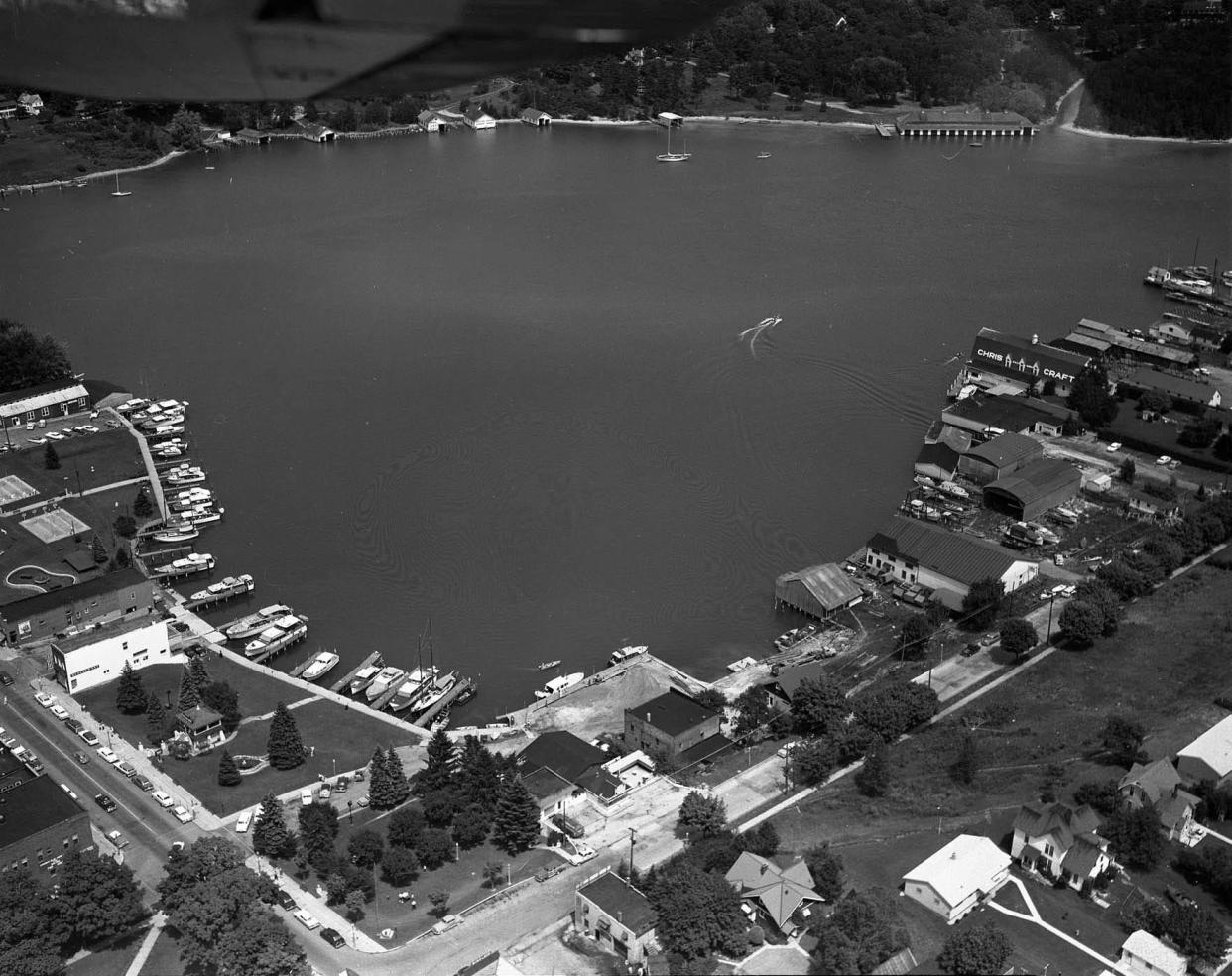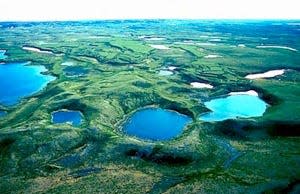Looking Back: Round Lake has always been Charlevoix's crown jewel

CHARLEVOIX — Eleventh in a series related to the new “Maritime History of Charlevoix, The City on Three Lakes” exhibit at the Charlevoix Historical Society’s Museum at Harsha House, 103 State St.
The crown jewel of Charlevoix’s three lakes is the smallest one, located right in the center of town, like a sapphire surrounded by emeralds. It is the first major element of our natural environment that first-time visitors encounter when they reach downtown. As one recent visitor stated, “I was so overwhelmed by the sight of that harbor I almost forgot I was behind the wheel of a car.”
That same sensation has happened to untold thousands. Another first-time couple stated that once they laid eyes on Round Lake, they found the first empty parking space and headed to the closest real estate office. Many mariners, both commercial and pleasure, have long maintained that Round Lake is the best naturally protected harbor in the United States. For 2021, USHarbors.com designated it as indeed the best harbor in the United States.
Round Lake began life at the end of the last Ice Age as a “kettle” lake when the glaciers, some of them two miles high, began to retreat. As the ice melted, a gigantic chunk of it could snag in a natural depression, break off, and be left behind where it melted. There was also the possibility of a shelf of ice high up breaking off and falling at tremendous speed until it hit the ground and formed a depression, into which it likewise melted. Water once filled the Round Lake basin, whose rims were Hurlbut Street on the south, and Dixon Avenue on the north. It is possible to see the results of that melted ice subsiding, in stages, on Belvedere Avenue. That street itself was once a beach, then the waters that lapped at it receded further to become today’s water level. Behind the Edgewater Inn, Thistle Downs Lane also traces the length of a long ago beach.
Subscribe: Check out our latest offers and read the local news that matters to you

After the cutting of our two channels between July and October of 1869, the resulting economic boom began to affect the entire region, not just the settlement then called Pine River, whose first major development area began at the lower channel neck. By the end of the 1870s, the entire Bridge Street side of Round Lake was chockablock with warehouses, wharfs, docks, and subsidiary maritime structures. Economic pressures never let up, so in the natural course of things the only way for development to go was around the corner, where Ward Bros. marine services is today, and head east. Again, almost the entire length of the south shore was devoted to the maritime base of our economy.
Almost, because in 1878 came the establishment of Charlevoix’s first resort association, now the Belvedere Club, which claimed the land where Round Lake tapers and empties into Lake Charlevoix. Two years later, the Chicago Club would follow suit across the upper channel, and that portion of Round Lake has still the same identity. At one time, the portion of Round Lake in front of the Chicago Club’s boathouse, built 1914, in the upper right of the photo, became a marine cemetery of sorts — boats that had reached either a natural or bad end were towed there and left to rot. As Charlevoix Sentinel newspaper editor Willard A. Smith summed up the sorry situation in 1907, “It looks bad.” His words were strong enough to bring an end to the practice.
Over on the north shore, beginning in the 1870s a major lumber mill was established where the Edgewater is today, called the Charlevoix Lumber Company. The company once owned all the shoreline properties within the west half of that waterfront, both for the mill and for the storage of hundreds of logs in what were called “rollways” that climbed up the bank. Beyond that, the O’Neill and Booth Fisheries establishments took up the eastern half of the shoreline.
After both fishing, which was once a gigantic business in Charlevoix, and lumbering faded from the scene in the early years of the last century, much of that land became empty and fallow. It wasn’t until the 1920s that the first private boathouse appeared on the former O’Neill property, followed by a few others. Only in the early 1960s did the former lumber mill footage start to become developed, by Earl Young and his daughter Virginia with four whimsical houses between them, two of them still intact as originally designed, one torn down, the fourth hugely remodeled.
The story of Round Lake is a story of constant development and usage changes, from a maritime basis bordered by the beginnings of our resort/tourist industry, through the almost total transformation of the south shore from maritime to residential in the form of condominiums and residential boathouses. The west side is currently the home of the Beaver Island Boat Company and Bridge and East parks, its shoreline devoted now to dockage for magnificent pleasure craft from around the country. The east side has never seen much change, other than the addition of a few lakeside residences north of the long boathouse. The north side traveled through commercial to residential with a few boathouses thrown in for both summer and year-round residents.
The more it changes, the more our treasure of a Round Lake remains the same, always one of the most beautiful places in Michigan.
This article originally appeared on The Petoskey News-Review: Looking Back: Round Lake has always been Charlevoix's crown jewel

